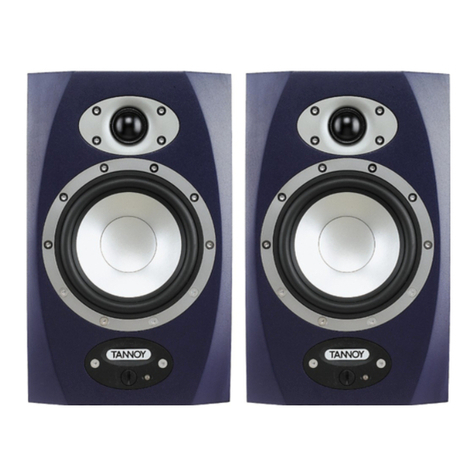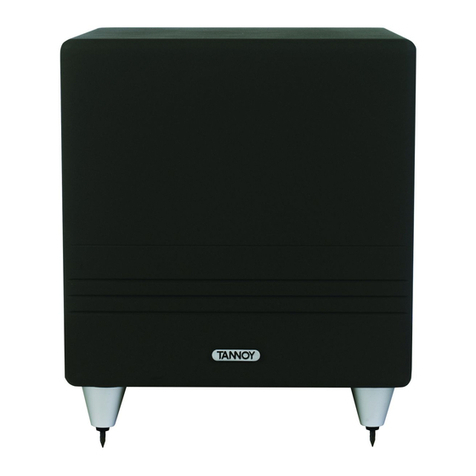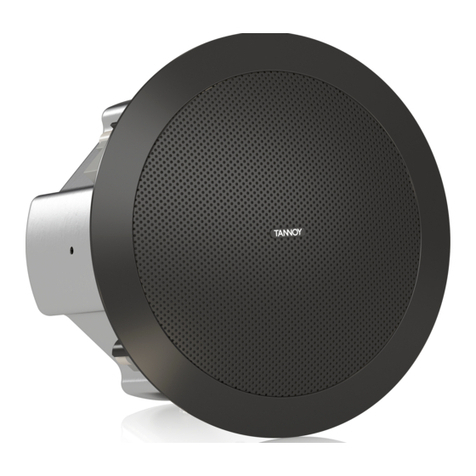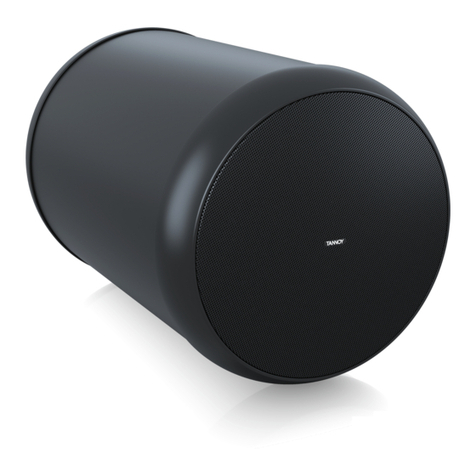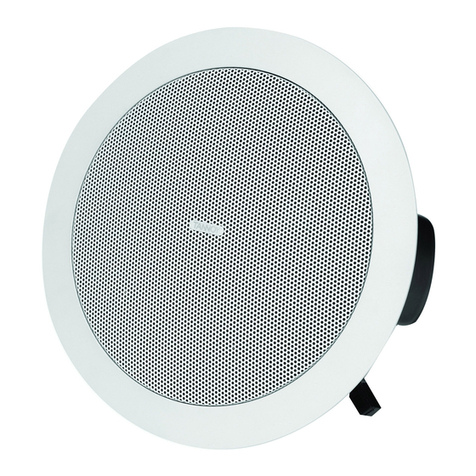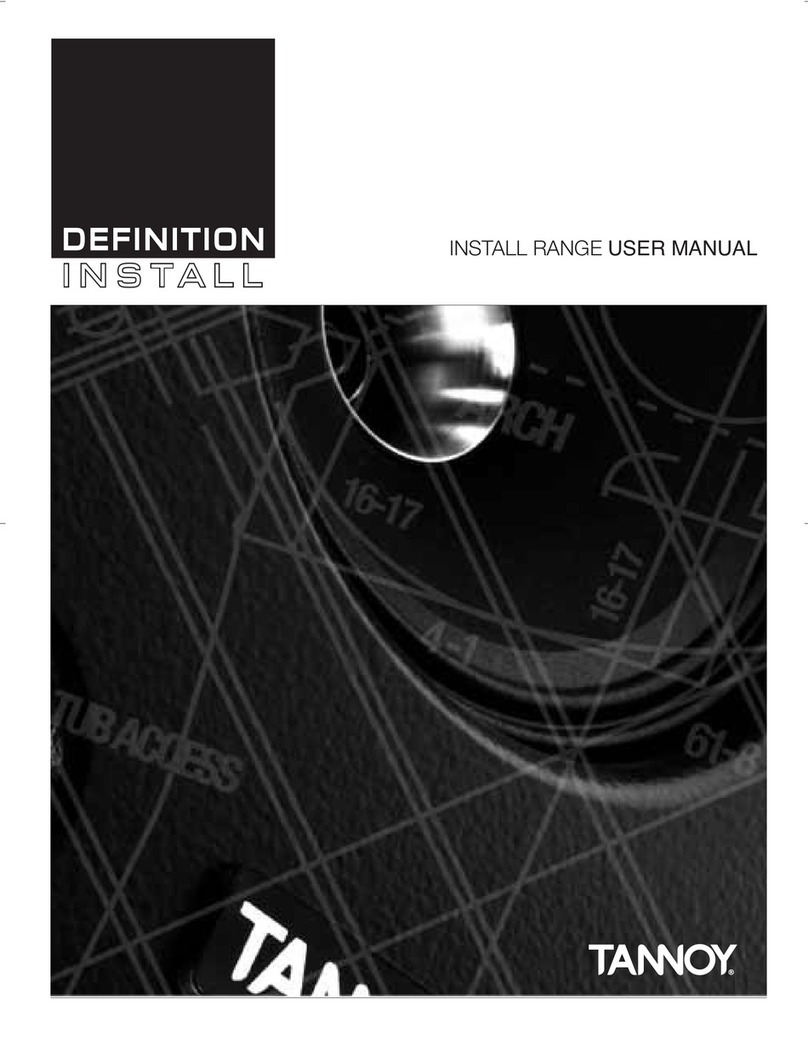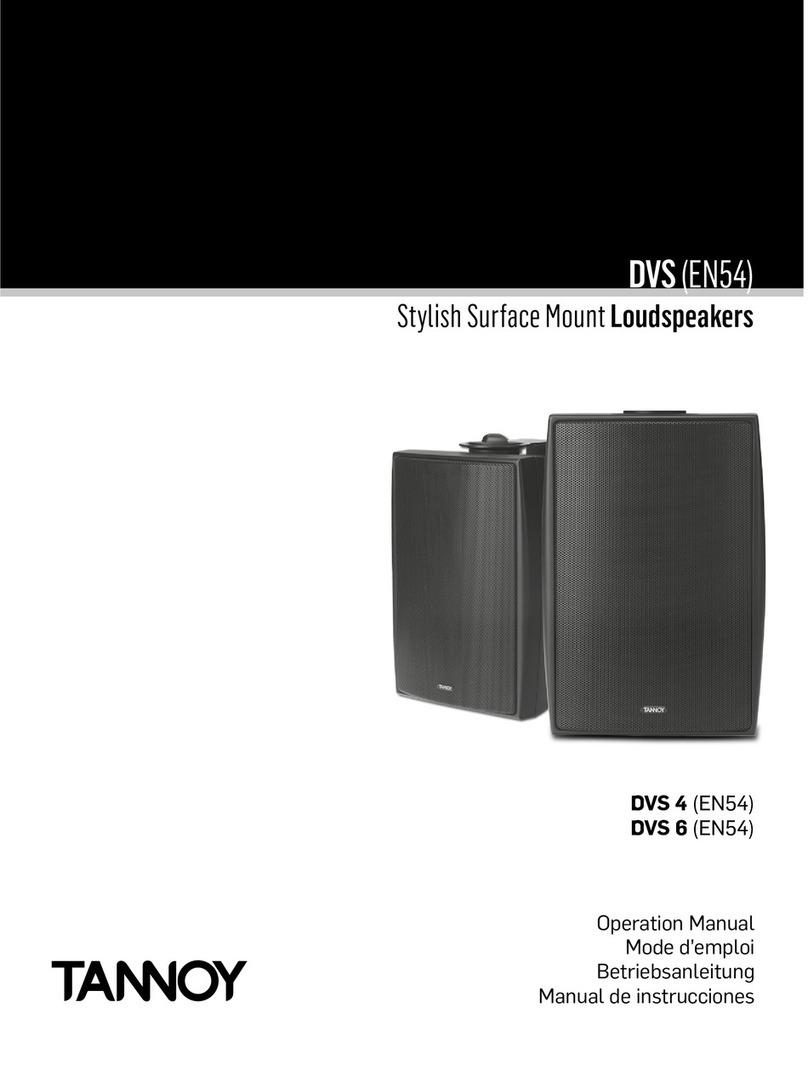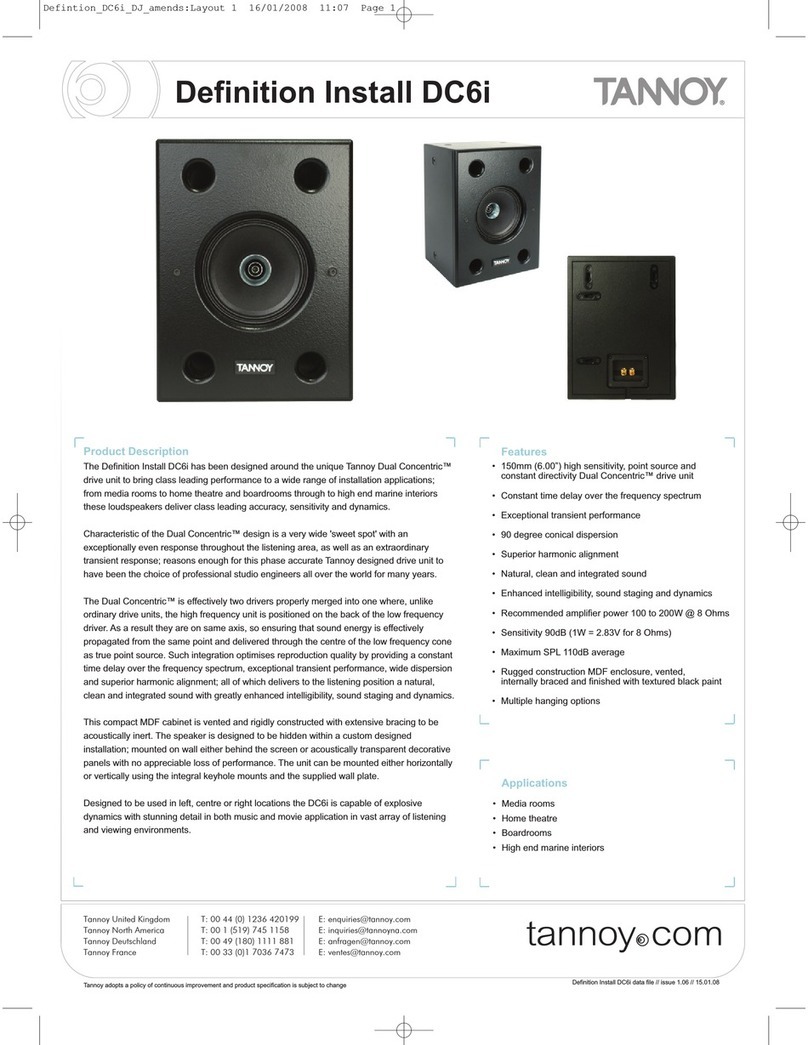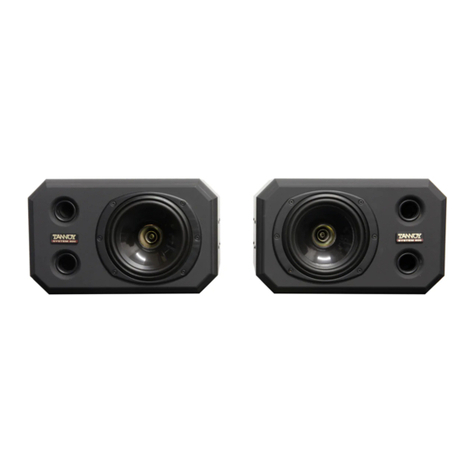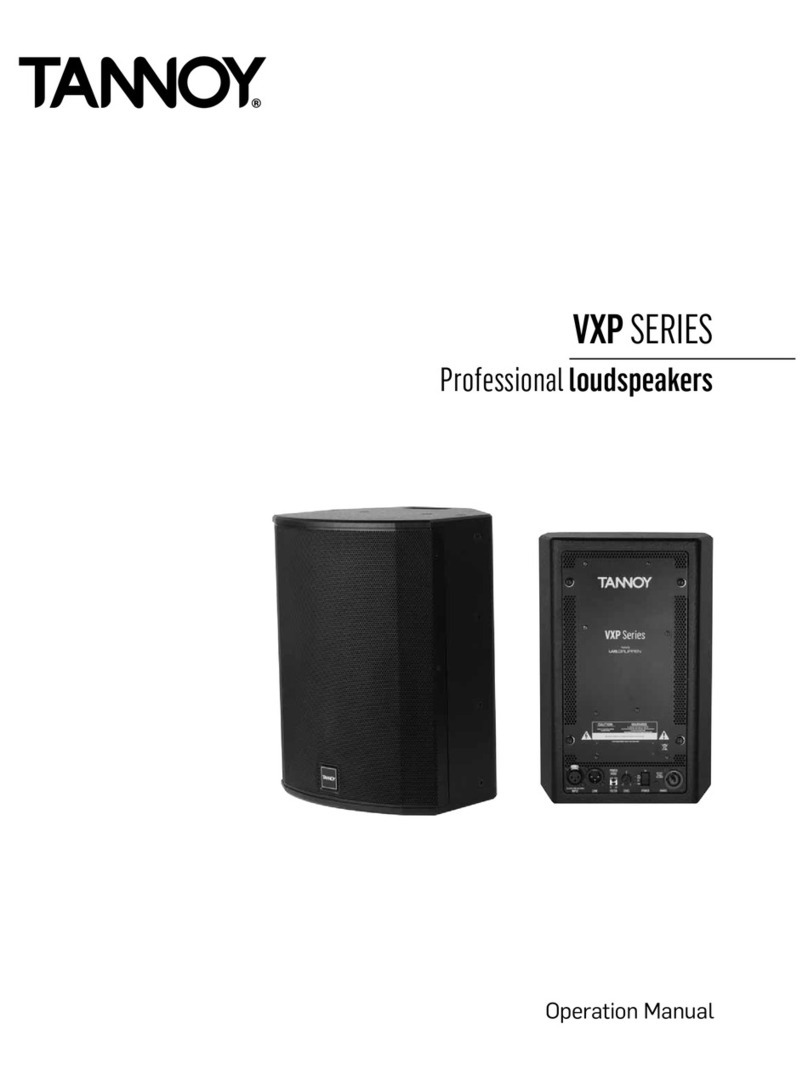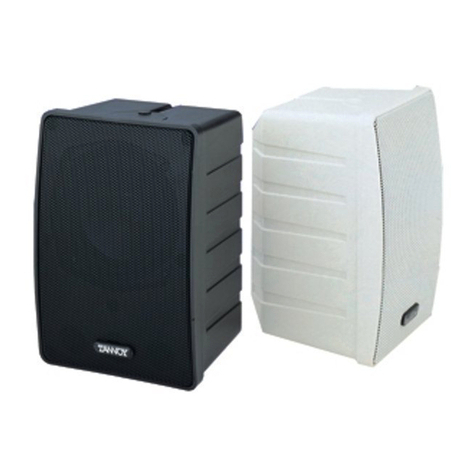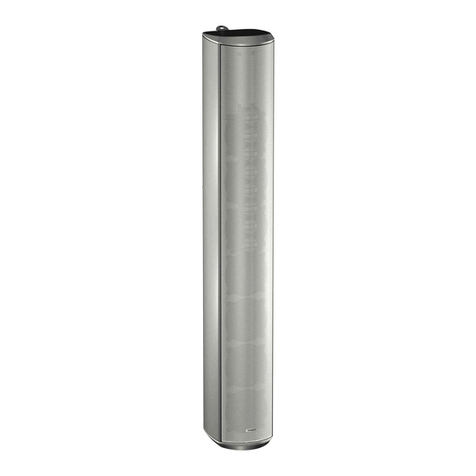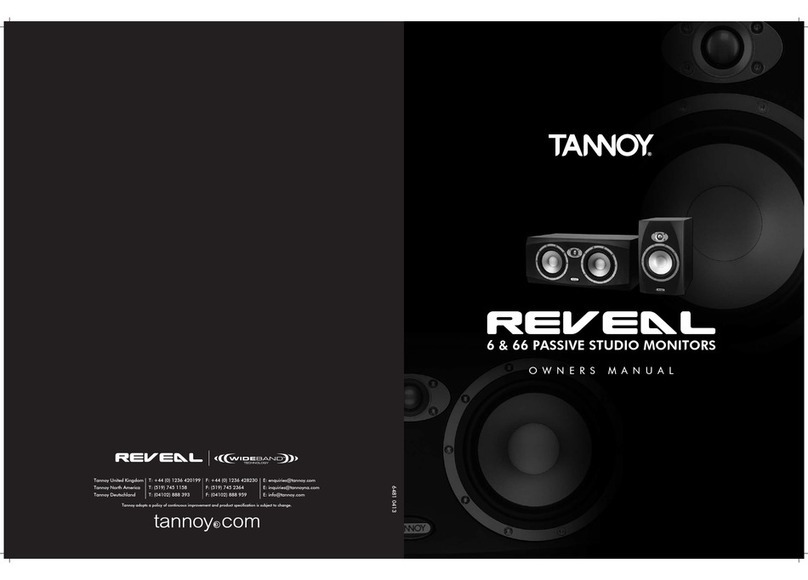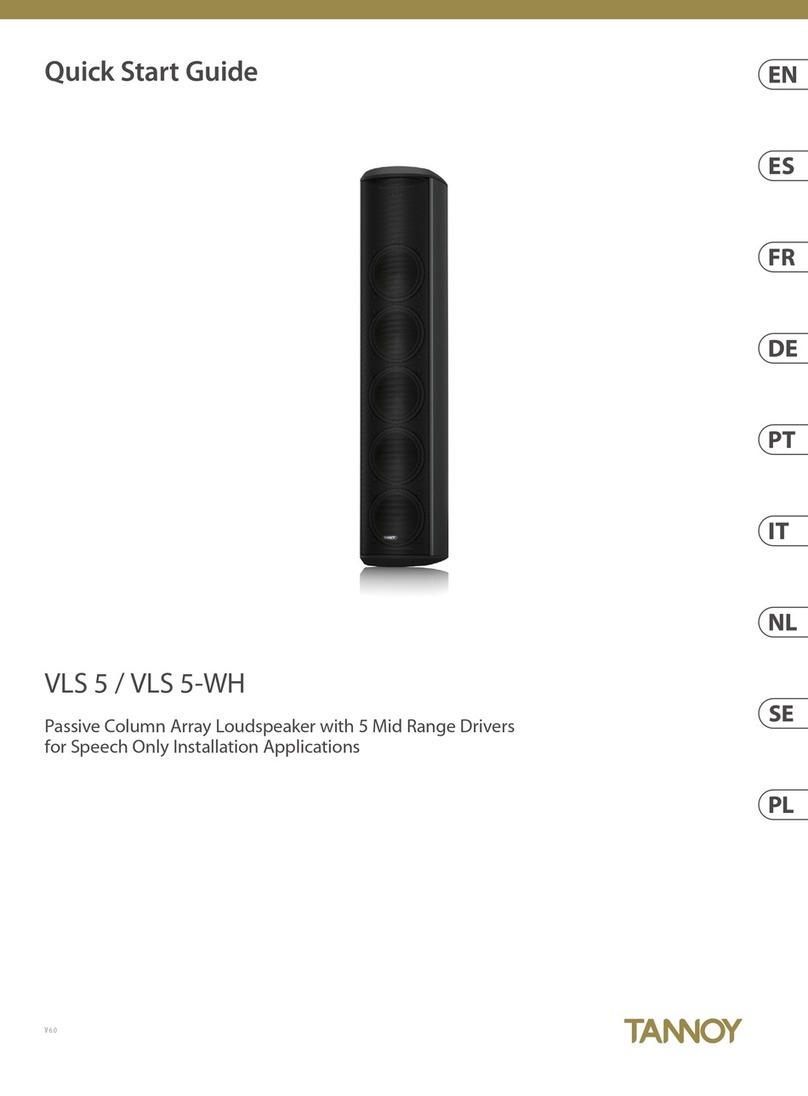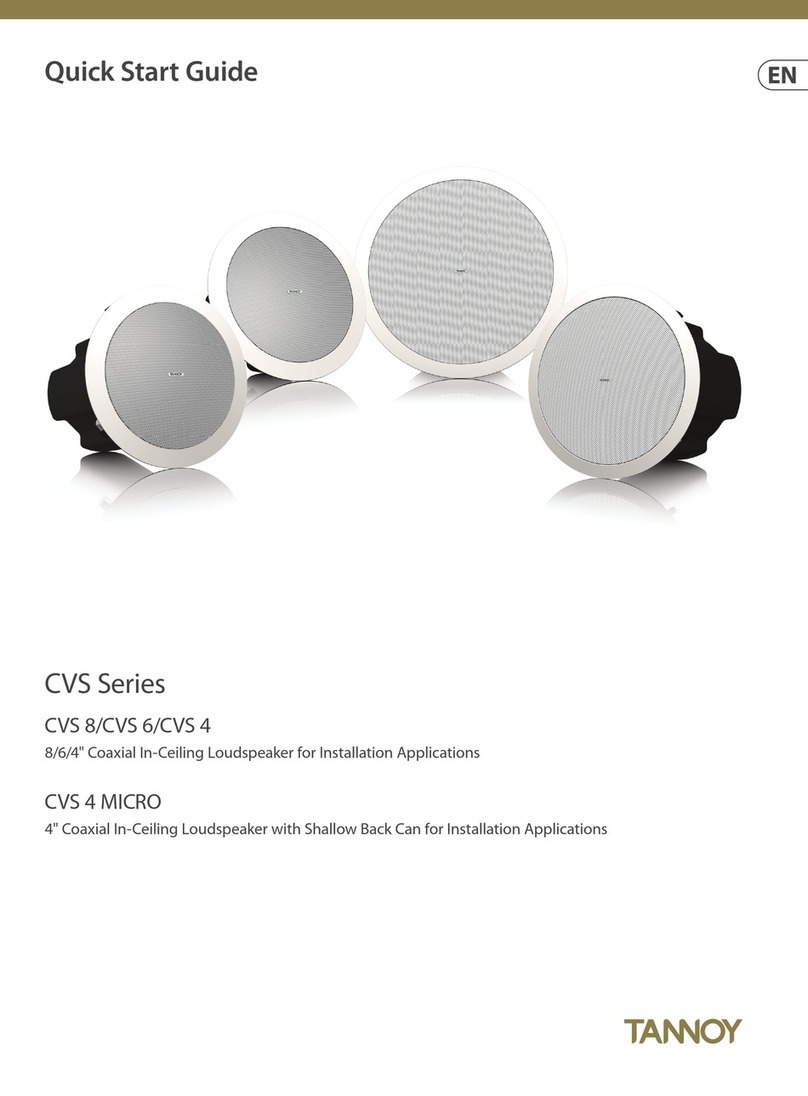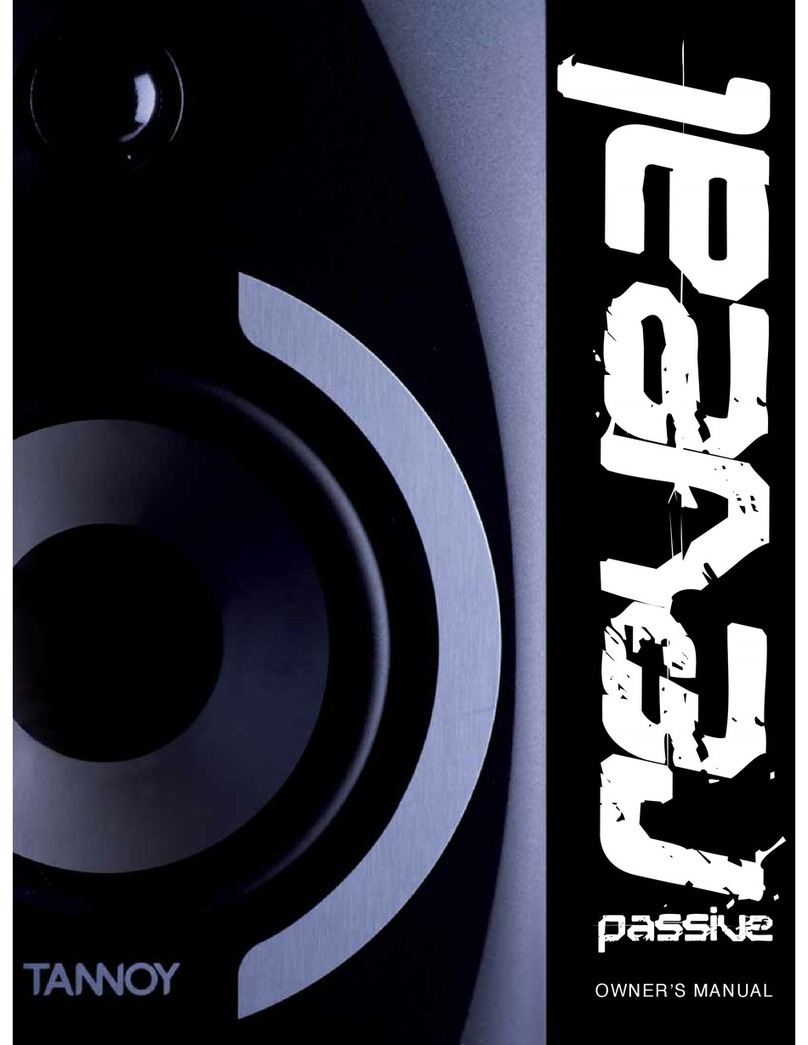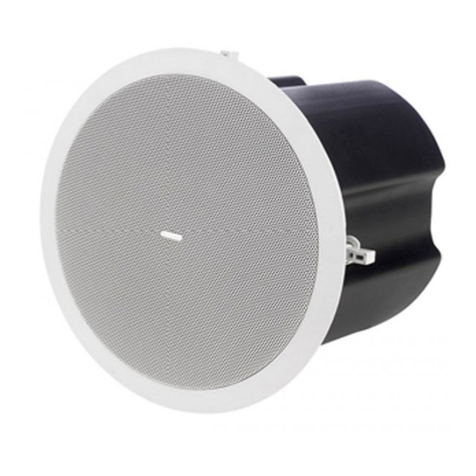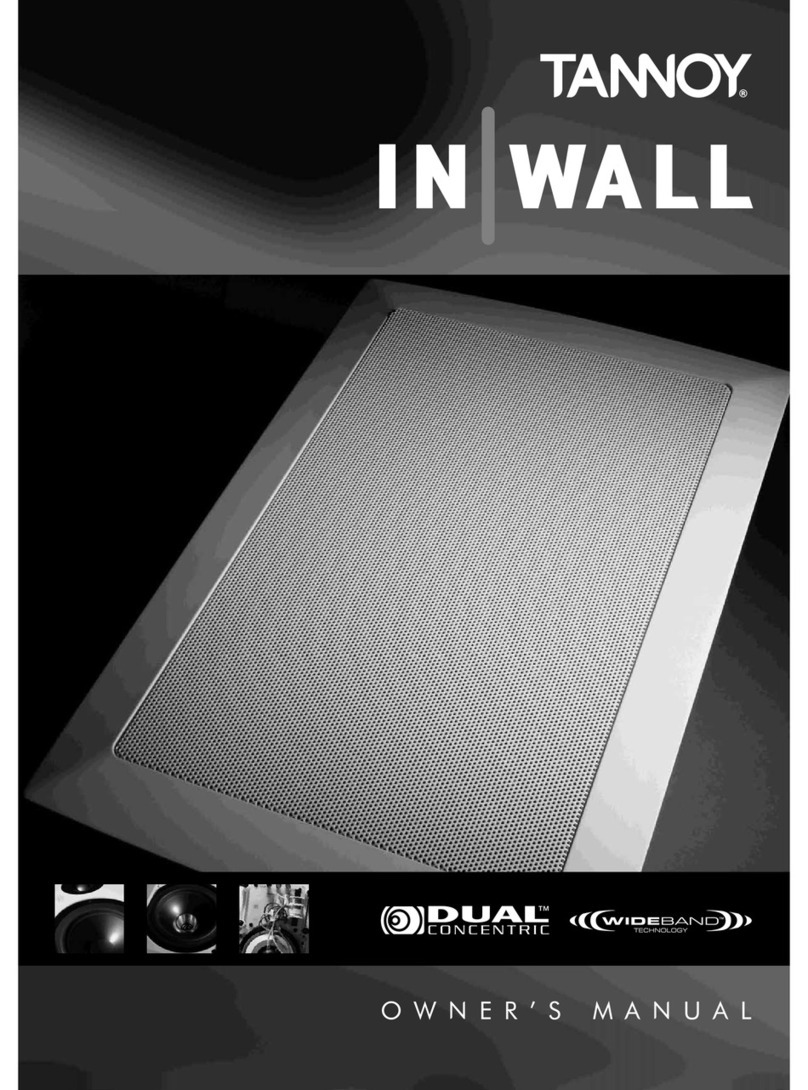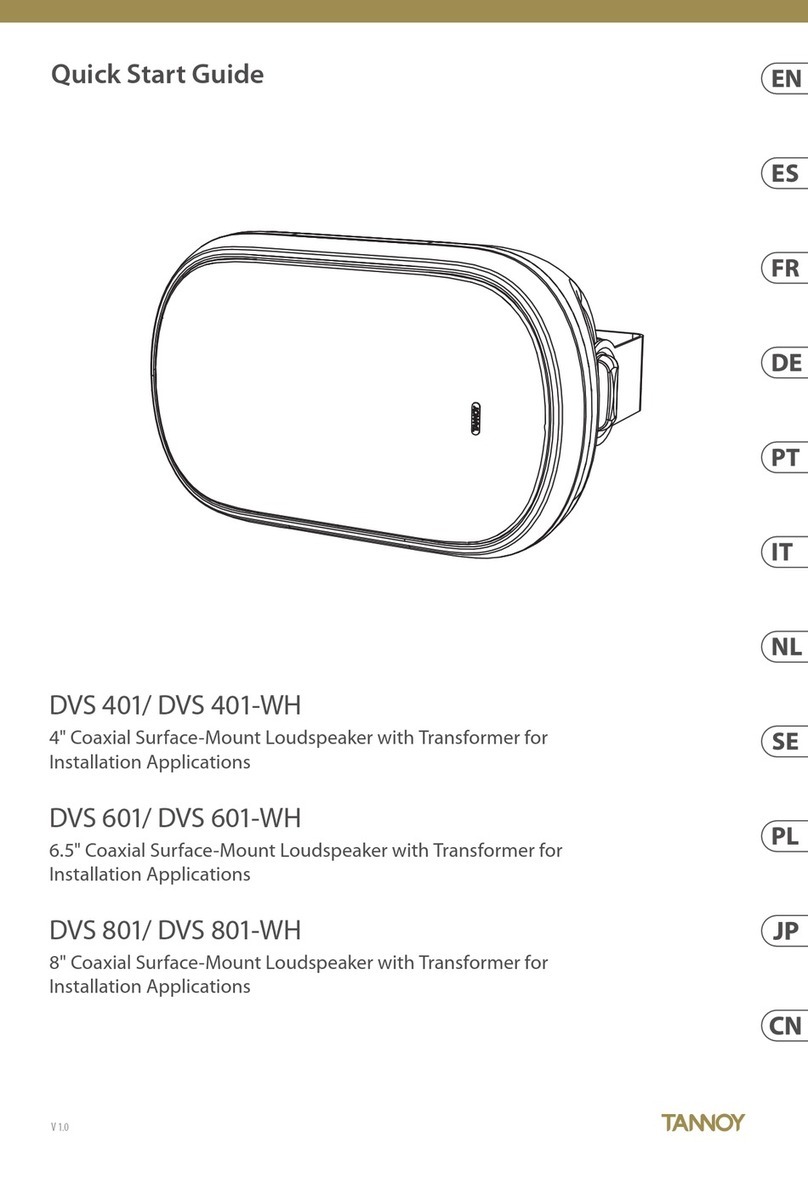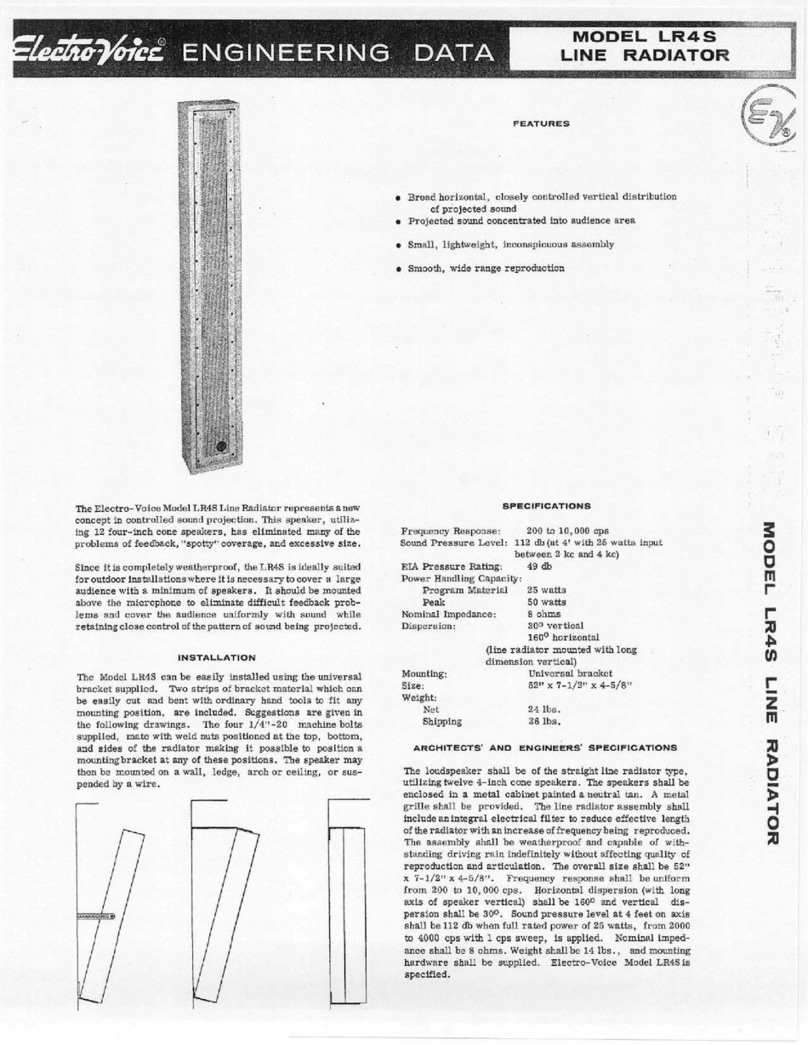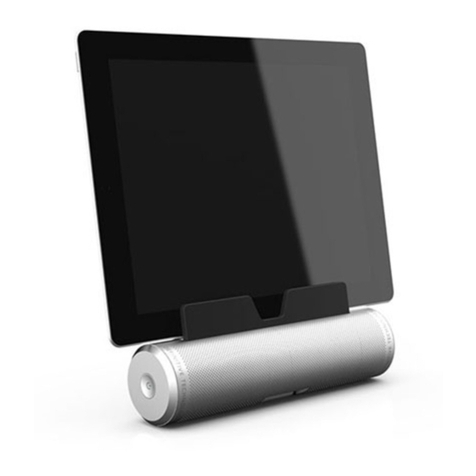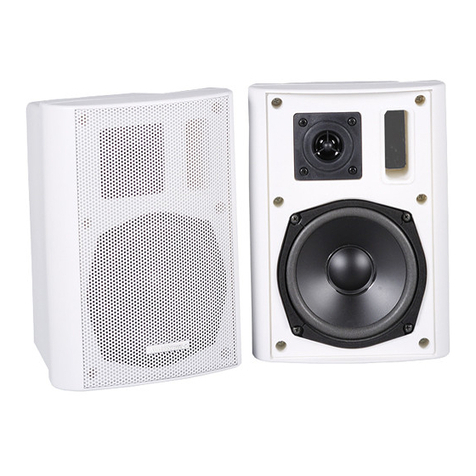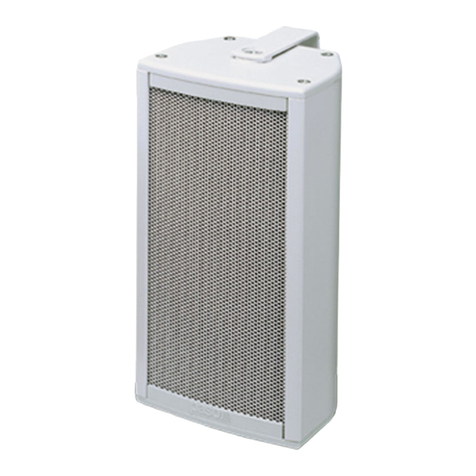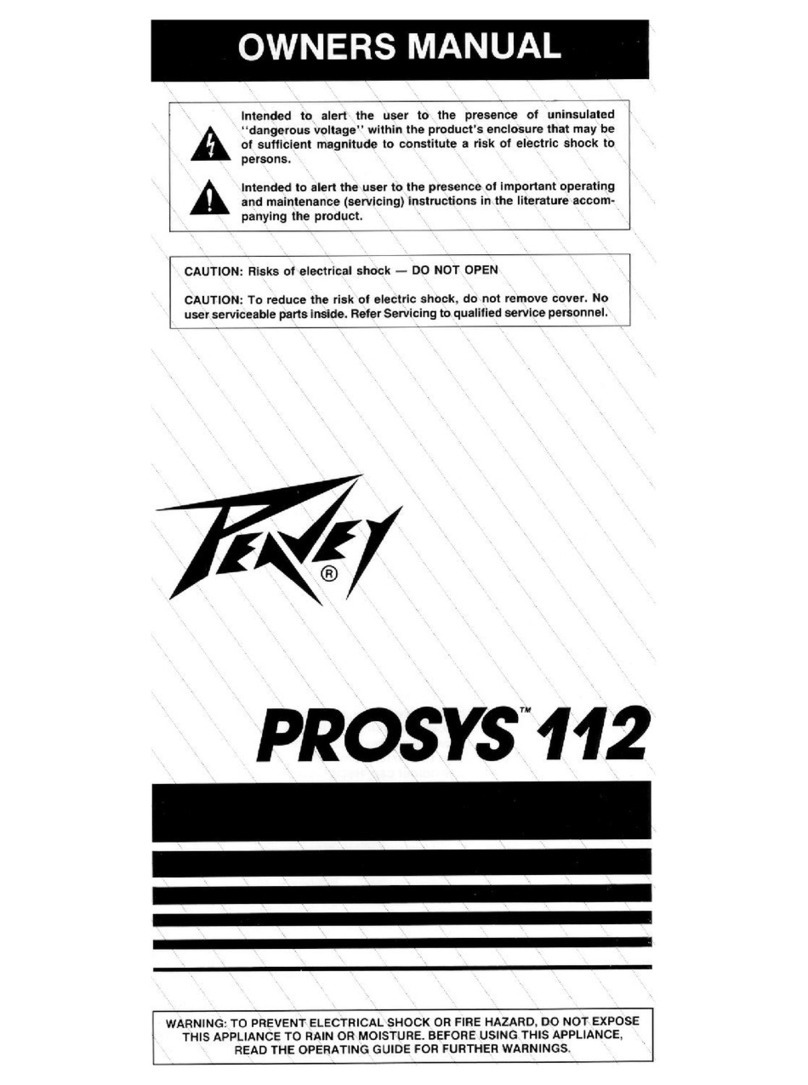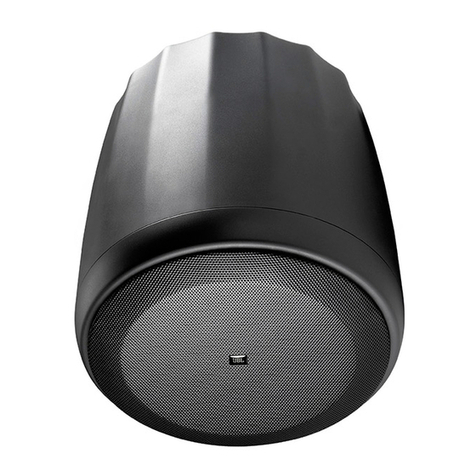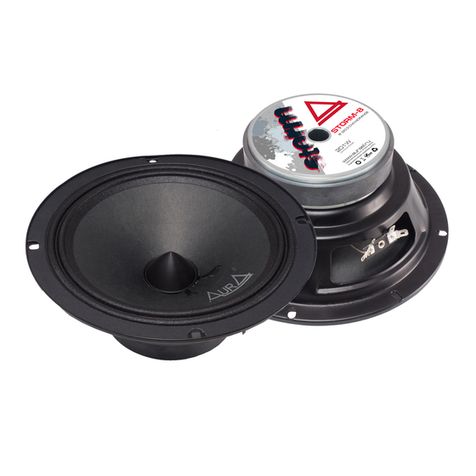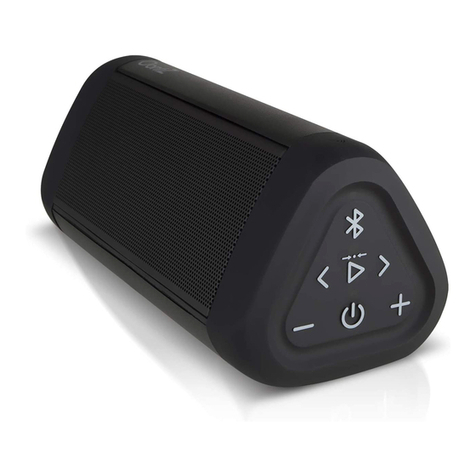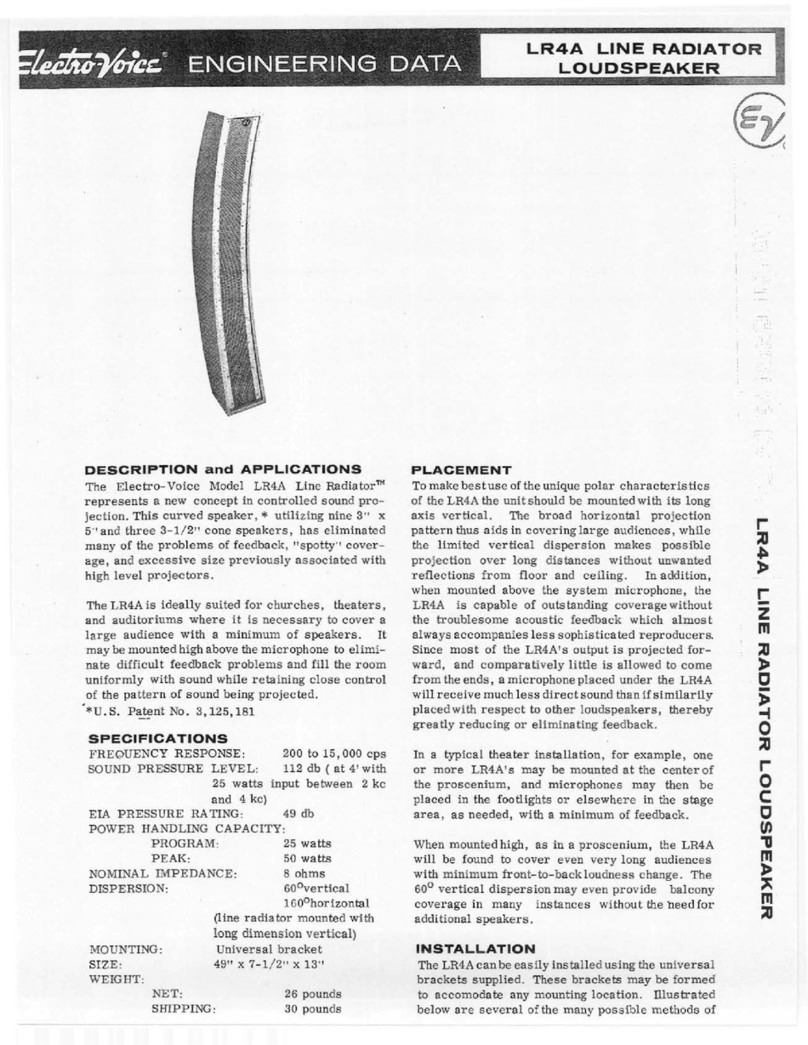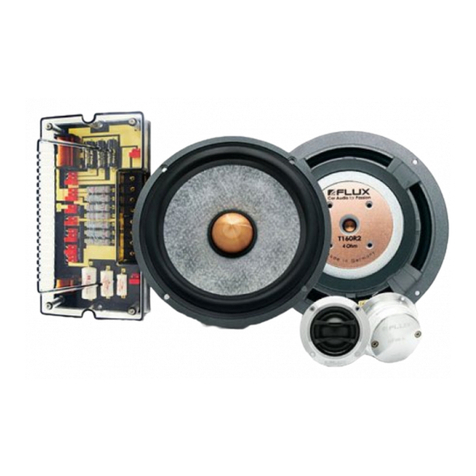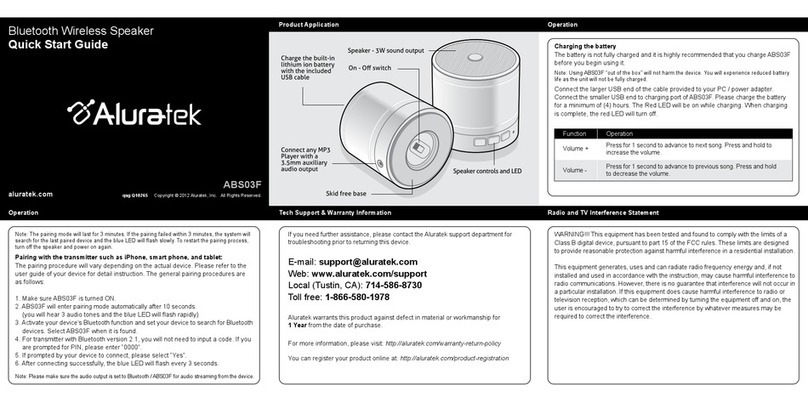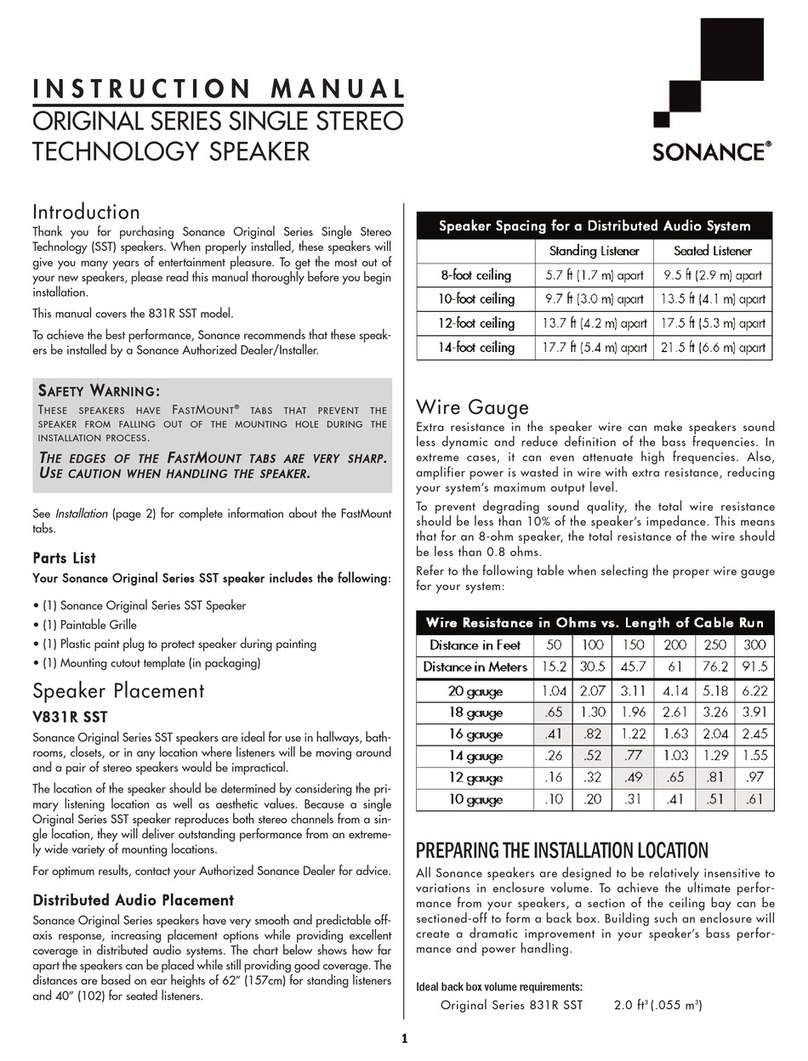High quality audio signals passing from power amplifier to loudspeaker are unusual in their demands on cable. Frequencies from 20Hz
to 20kHz (10 octaves or a ratio of 10,000:1) and currents of 80dB dynamic range (again a ratio of 10,000:1) have to coexist. The cable
also has to be capable of transmitting peak currents of at least 10 Amp without causing losses greater than 0.001 Amp (10 Amp divided
by the ratio 10,000). These strict requirements on loudspeaker cables help explain why the sound quality from loudspeakers is so
dependant on the physical properties of the cables connecting them to the power amplifier.
Cables
Grille Removal
Special acoustically transparent cloth is used in the grilles. However, for ultimate fidelity the enthusiast will find it is best to use these
loudspeakers with their grilles removed during listening.
The large front grille is removable for access to the front panel controls. Insert the key provided into the lock at the bottom of the main
grille assembly and turn anti-clockwise to release. Pull the bottom of the grille away from the cabinet; the grille will drop down from
its upper location. Take care not to damage the solid walnut lower part of the cabinet. To replace the grille engage the top of the grille
into the slot in the cabinet and push the grill into the recess. Apply slight pressure to the bottom whilst turning the key clockwise to
engage the lock.
The side grilles are service removable only, by pulling them away from locating dowels mounted on the cabinet. Do not use excessive
force and take care not to damage the solid walnut mouldings.
Loudspeaker System Adjustment
Each loudspeaker is fitted with two controls located on the front baffle beneath the detachable grille. These high current switch blocks
are labelled ROLL OFF and ENERGY. They can be used to compensate for the varied acoustic characteristics of listening rooms. The
controls should be adjusted with the amplifier tone controls in the 'flat' or uncompensated position. Each loudspeaker should be adjusted
individually. This is most easily done by rotating the amplifier balance control to select first one loudspeaker and then the other.
The ENERGY control has five positions. It allows the output of the high frequency compression drive unit to be increased or decreased
from the linear or 'flat' position over a frequency band from approximately 1kHz to 20kHz.
The ROLL OFF control has five positions (+2, level, -2, -4 and -6dB per octave) and provides adjustment at extreme high frequencies
from 5kHz to 20kHz.
The ENERGY control has a shelving effect over the 1kHz to 20kHz frequency band whereas the ROLL OFF control increases or
decreases the slope of the extreme high frequency response hinging about 5kHz.
The flattest, most linear response from the loudspeaker will be obtained with both controls set at the LEVEL position, and this position
should be used for initial listening tests. If the overall high frequency sound quality seems too prominent the -1.5 or -3 positions for
the ENERGY control should be tried. If the sound appears subdued in the treble region +1.5 or +3 settings may be preferred. Once
the ENERGY control setting has been established the ROLL OFF control can be adjusted to reduce or slightly increase the extreme
high frequency content if necessary.
Remember the changes that can be made by moving either control from one position to another are subtle. They may not easily be
heard if the programme material has very little content in the frequency band under consideration. Choose a well balanced piece of
music with a full spectrum of sound. The correct setting will be found when the loudspeakers are no longer evident and only the musical
performance is heard.
Running in
Like all loudspeakers, the drive unit in your Westminster Royal SE requires a while to reach optimum performance, as the stresses in
the materials relax - especially in the suspension system. For this reason, it is beneficial to run the system at fairly high levels at normal
room temperature, for approximately 20 hours to achieve best results.
67
The low frequency section of the Dual Concentric™ driver is a high compliance unit of exceptional power handling and dynamic range.
The low frequency cone piston is produced from selected paper pulp. This is specially treated to absorb internal resonance modes.
The completed cone is fitted with unique rigid reinforcing members to attain a very high stiffness to mass ratio thereby preserving
piston action over the operating frequency range.
The twin roll fabric surround is also damped and shaped correctly to terminate the moving cone and provide optimum compliance and
linearity at large excursions. The cone piston is driven by a high power motor system consisting of a four-layer coil suspended in a
precision magnetic air gap. The coil is wound with a special high temperature adhesive system and individually cured to ensure reliable
operation at high peak power inputs. The shape of the low frequency cone is arranged to provide optimum dispersion of audio frequencies
at both the high and low ends of the spectrum. The cone flare continues the high frequency horn profile to ensure a smooth transition
at the crossover point.
The Low Frequency Section
Tannoy Dual Concentric Drive Unit
One of the unique advantages of the Tannoy Dual Concentric™ principle is that the low and high frequency sound radiation is generated
on the same axis. The high frequency unit is mounted behind, and concentrically with, the low frequency unit. High frequency sound
radiates from the centre of the low frequency unit through a carefully designed high frequency exponential horn. Low and high
frequencies are therefore fully integrated at source. It is this feature that gives the Dual Concentric™ driver such unique sound
reproduction qualities.
There are other significant benefits. The high frequency unit does not obstruct the low frequency unit in any way (a unique feature
when compared with other so called coaxial systems). Polar dispersion of sound is symmetrical in both horizontal and vertical planes.
By careful crossover network design the virtual acoustic sources of the high and low frequency units can be made to occupy the same
point on the axis. Therefore the total sound appears to emanate from a single point source located slightly behind the drive unit. This
means that a full and accurate stereo image can be recreated by the loudspeakers when fed from a high quality stereo source.
The high frequency driver consists of a wide dynamic range compression unit giving superb transient performance with a smooth
uncoloured response. The compression unit feeds acoustic power through a multiple phase compensating device to the throat of a solid
steel acoustic horn. This horn provides an acoustic impedance transformation to match the compression unit radiation into the listening
environment.
A magnesium alloy diaphragm formed by a specially developed five-stage process produces a piston with a very high stiffness to mass
ratio. Optimum molecular grain structure gives long term durability. A very low mass precision aluminium coil provides the driving
force for the diaphragm, with fine multistranded copper lead out wires to ensure reliability. A rear damped acoustic cavity controls the
compression driver response and ensures further correct acoustic impedance matching to the horn throat.
The response of the compression horn driver extends a full two octaves below the crossover frequency to eliminate colourations that
can arise through operation over the fundamental resonance region.
The High Frequency Section
An Alcomax 3 high energy magnet provides flux generation for both high frequency and low frequency driving motors. Precision air
gaps contain the magnetic flux surrounding each coil. The high frequency air gap has a unique shunt member to apportion the total
magnetic flux in the correct ratio between low and high frequency units. This gives an optimum acoustic balance. Precision machined,
low carbon steel pole pieces ensure unsaturated operation, linear flux fields and a high heat sinking capability. High power inputs can
therefore be handled with minimum change of impedance due to temperature effects. A very robust, high quality, precision pressure
die-cast chassis locates the whole magnet assembly and positions the moving parts with high accuracy. This provides long term reliability
and yet does not interfere with the acoustic radiation from the individual sections.
The Magnetic Circuit
Alcomax 3 is an unusually high energy permanent magnet. The unusual iron / nickel alloy is doped with cobalt, aluminium and other
rare metals to produce a magnetic material with very special properties. Alcomax 3 has a high remanent magnetism and energy product.
In other words, it magnetises to a high level and retains that unusual degree of magnetisation. Alcomax 3 is also an electrical conduction.
These properties give the Dual Concentric™ drive unit using an Alcomax 3 magnet an exceptionally clean transient response and
increased sensitivity.
Alcomax Magnet
™
